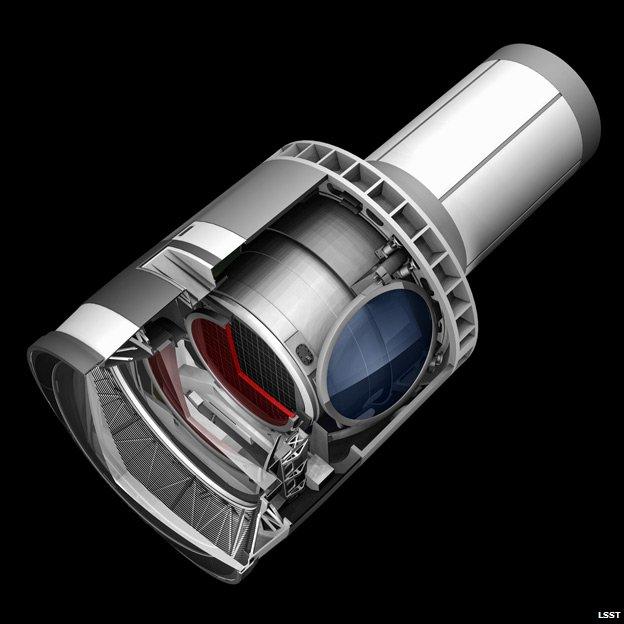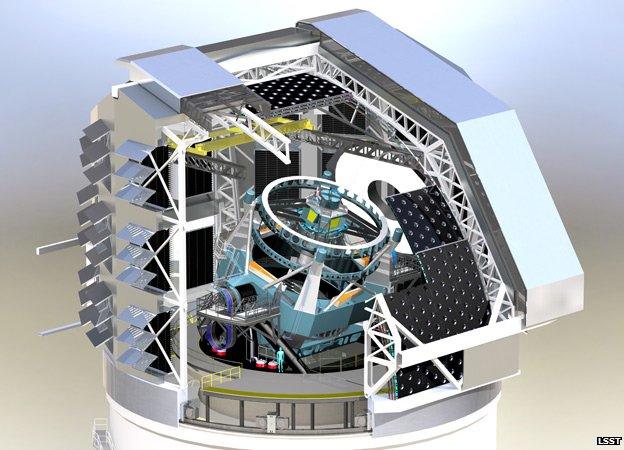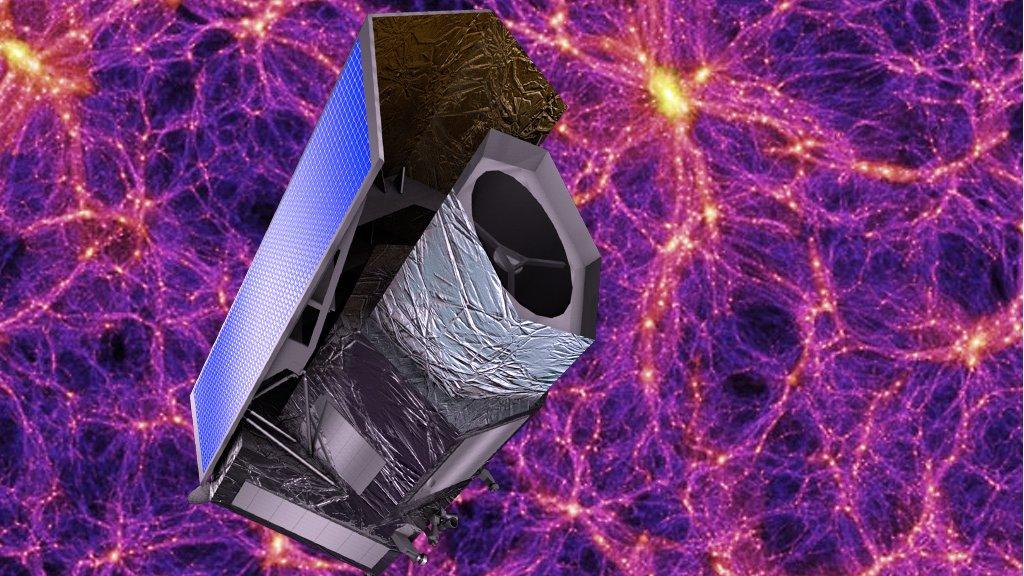Camera seeks dark energy clues
- Published
Scientists explain how a new telescope will be able to study "dark energy"
California scientists have given details of a telescope they are assembling to study "dark energy".
The Large Synoptic Survey Telescope, external is being purpose-built to discover more about the force that is accelerating the expansion of the Universe.
The LSST will study 20 billion galaxies in order to calculate the recession rate through cosmic time.
Its camera will be built at the SLAC National Accelerator Laboratory near Palo Alto.
Once constructed on a mountaintop in Cerro Pachon, Chile, the £250m ($400m) LSST will be able to take images of the entire Southern Hemisphere in just a few nights. And it will do that repeatedly for 10 years.
It was thought less than 20 years ago that the expansion of the Universe after the Big Bang might be slowing down under the gravitational attraction of all its matter.
Instead, galaxies have been shown to receding at an increasing speed.

SLAC is leading the construction of the 3,200-megapixel camera
Cosmologists have called the force behind it dark energy, but they concede they know next to nothing about how it works.
Prof Steve Kahn, who is in charge of the LSST project, told me that he thought the observation of dark energy in 1998 was one of the greatest discoveries of physics in the past 50 or 60 years.
"This has been described as one of the greatest mysteries in the whole of physics; it was responsible for the award of the Nobel Prize a few years ago, and so it's really one of the basic, fundamental things that we don't understand about the Universe we live in."
I asked Prof Kahn’s Colleague, Aaron Roodman, who is an expert on dark energy, to explain what it was and how it was driving the expansion of the Universe.
"In some sense we don't know. That's what we’re trying to figure out," he replied.
"If I go back to my own days in graduate school, at that point we kind of thought we understood what all the matter in the Universe was made of."
And now we've discovered that we only understand 4% of it. Only 4% is in atoms; things we have an understanding of. And the rest is dark - dark in that it doesn't shine and it doesn't emit light."
The data from the LSST and other telescope should help physicists put some constraints on the true nature of dark energy.
The new information, according to Prof Roodman, should enable scientists to determine better how the Universe will evolve.
"It will tell us whether the Universe will really be an empty place with just our galaxy and nothing else nearby visible, or conceivably space-time itself could be ripped apart by the effects of dark energy."

Science operations are scheduled to begin in 2022
- Published5 February 2015

- Published27 June 2013
